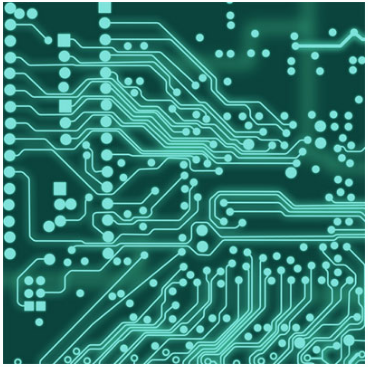The knowledge of PCB wiring and routing is very advanced, everyone will have their own experience, but there are still some common principles.
◆High-frequency digital circuit traces should be thinner and shorter
◆Attention should be paid to isolation between high current signal, high voltage signal and small signal (the isolation distance is related to the withstand voltage to be withstood. Normally, the distance between the board should be 2mm at 2KV, and the distance should be increased in proportion to this. For example, if you want to withstand the 3KV withstand voltage test, the distance between the high and low voltage lines should be more than 3.5mm. In many cases, to avoid creepage, slots are also slotted between the high and low voltages on the printed circuit board.)
◆When wiring two panels, the wires on both sides should be perpendicular, oblique, or bent to avoid parallel to each other to reduce parasitic coupling; printed wires used as the input and output of the circuit should be avoided as far as possible. In order to avoid feedback, it is best to add a grounding wire between these wires.
◆The corners of routing should be greater than 90 degrees as much as possible, avoid corners below 90 degrees, and use 90 degree corners as little as possible
◆It is the same address line or data line, the length of the trace should not be too different, otherwise the short line part needs to be artificially bent for compensation
◆As far as possible, the trace should be on the soldering surface, especially the through-hole PCB
◆Use vias and jumpers as little as possible
◆PCB single-panel pads must be large, and the wire connecting the pads must be thick, and teardrops can be placed when teardrops can be placed. The quality of general single-panel manufacturers will not be very good, otherwise there will be problems with soldering and RE-WORK

◆A large area of copper should be covered with a grid to prevent bubbles and bending of the board due to thermal stress during wave soldering. However, in special occasions, the flow direction and size of the GND should be considered. You cannot simply fill it with copper foil., But need to route
◆Components and traces should not be placed too close to the side. Generally, single-sided boards are mostly paper boards, which are easy to break after being stressed. If they are connected or placed on the edge, they will be affected.
◆Convenience of production, debugging and maintenance must be considered
It is very important for analog circuits to deal with the ground problem. The noise generated on the ground is often inconvenient to predict, but once it is generated, it will bring great troubles, and it should be rainy. For the power amplifier circuit, the extremely small ground noise will have a significant impact on the sound quality due to the subsequent amplification; in the high-precision A/D conversion circuit, if there is a high-frequency component on the ground wire, a certain temperature drift will occur, which will affect The work of the amplifier. At this time, you can add decoupling capacitors to the 4 corners of the board, one pin is connected to the ground on the board, and the other pin is connected to the mounting hole (connected to the case by screws), so that this component can be taken into account, and the amplifier and AD are also It's stable.
In addition, the issue of electromagnetic compatibility is even more important when people pay more attention to environmentally friendly products. Generally speaking, there are three sources of electromagnetic signals: signal source, radiation, and transmission line. Crystal oscillator is a common high-frequency signal source, and the energy value of each harmonic of the crystal oscillator on the power spectrum will be significantly higher than the average value. The feasible approach is to control the amplitude of the signal, ground the crystal housing, shield the interference signal, and use special filter circuits and devices.
What needs special explanation is the serpentine trace, because its function is different because of the different applications. It is used in some clock signals in the computer motherboard, such as PCIClk, AGP-Clk, and its function has two points: 1. Impedance matching 2. Filter inductance.
For some important signals, such as the HUBLink in the INTELHUB architecture, there are a total of 13 and the frequency can reach 233MHZ. The length must be strictly equal to eliminate the hidden dangers caused by time lag. At this time, the serpentine wiring is the only solution.
Generally speaking, the line spacing of the serpentine trace is >=2 times the line width; if it is used in an ordinary PCB board, it can be used as an inductance coil for a radio antenna, etc. in addition to the filter inductance.